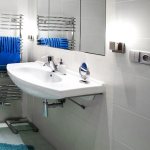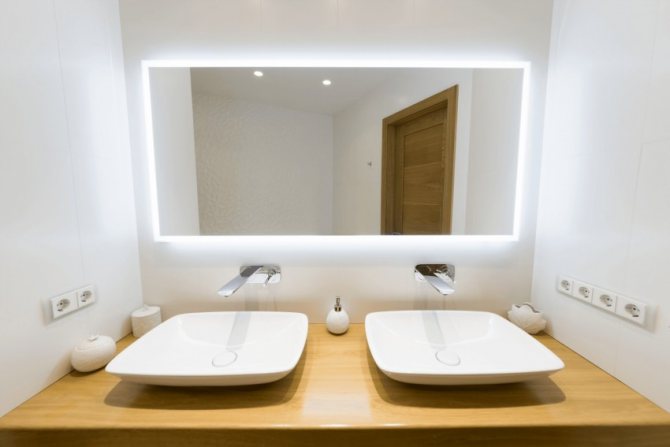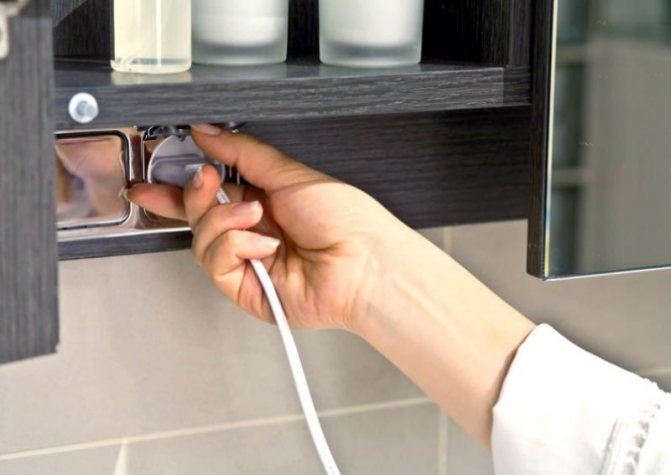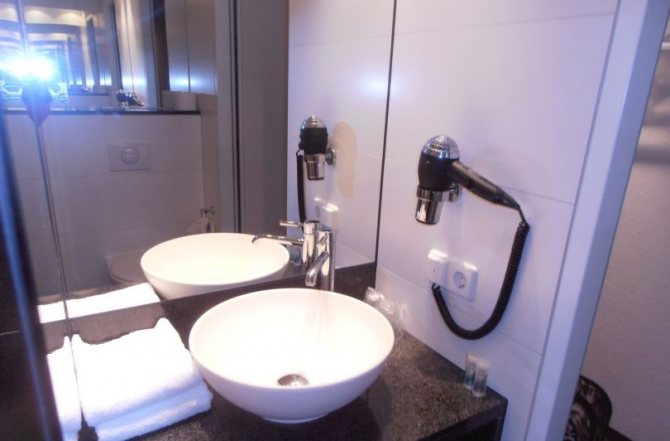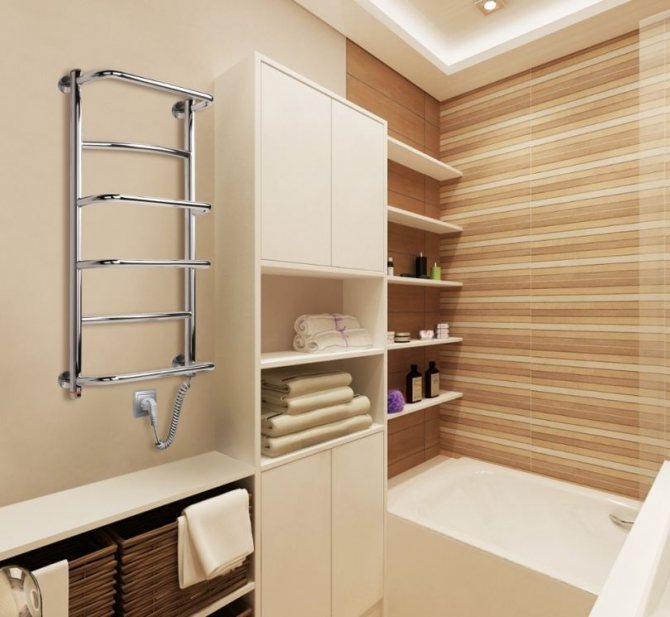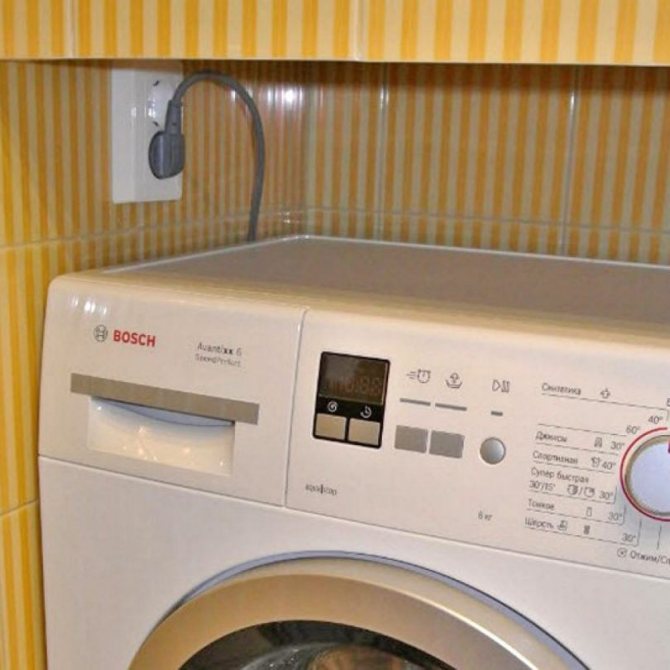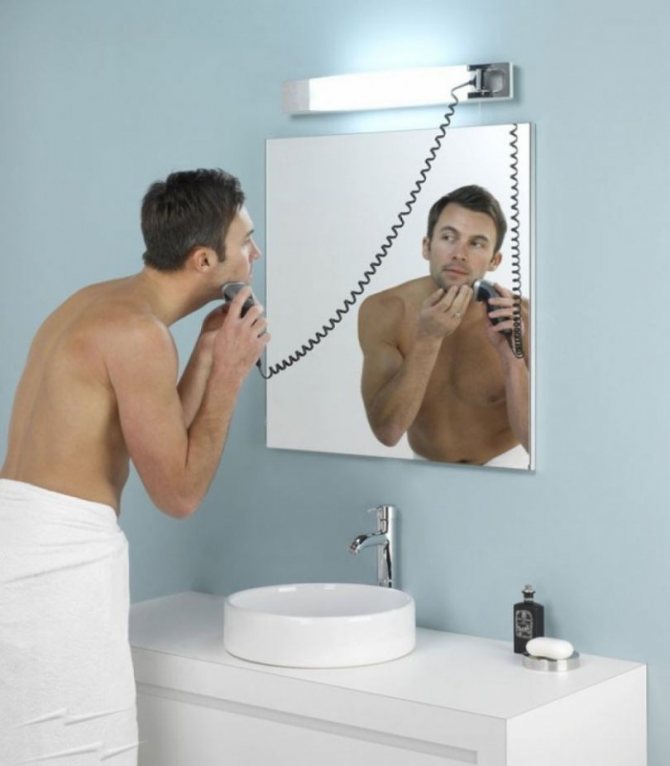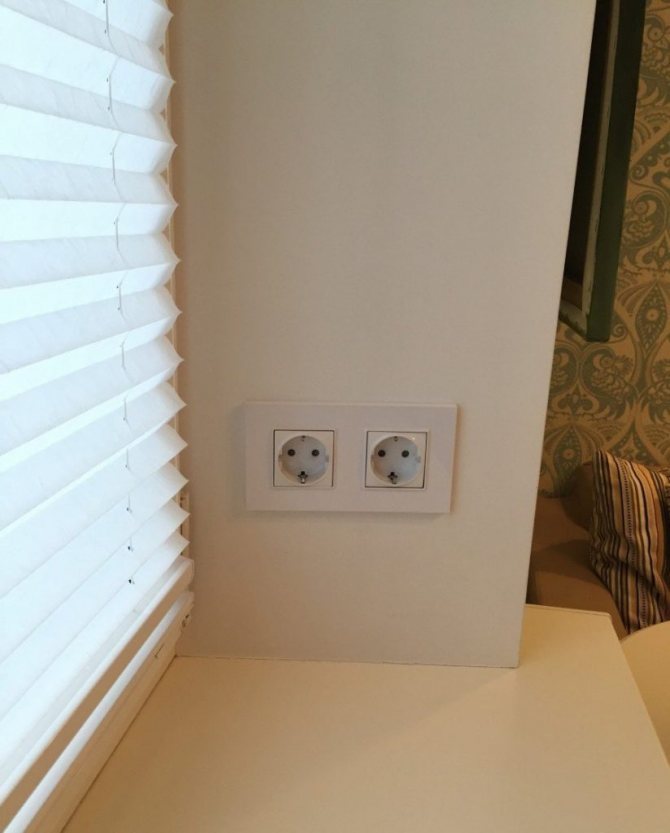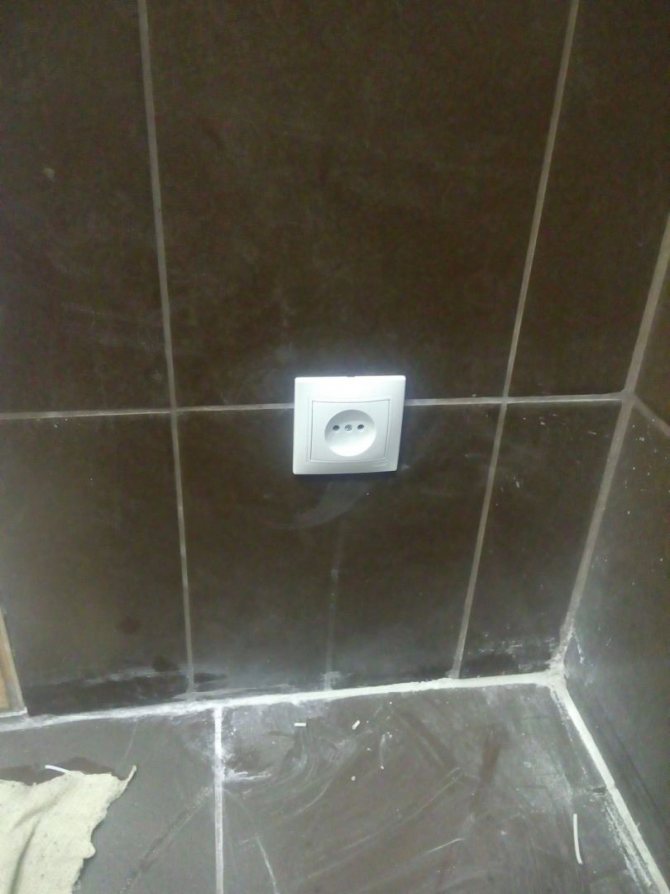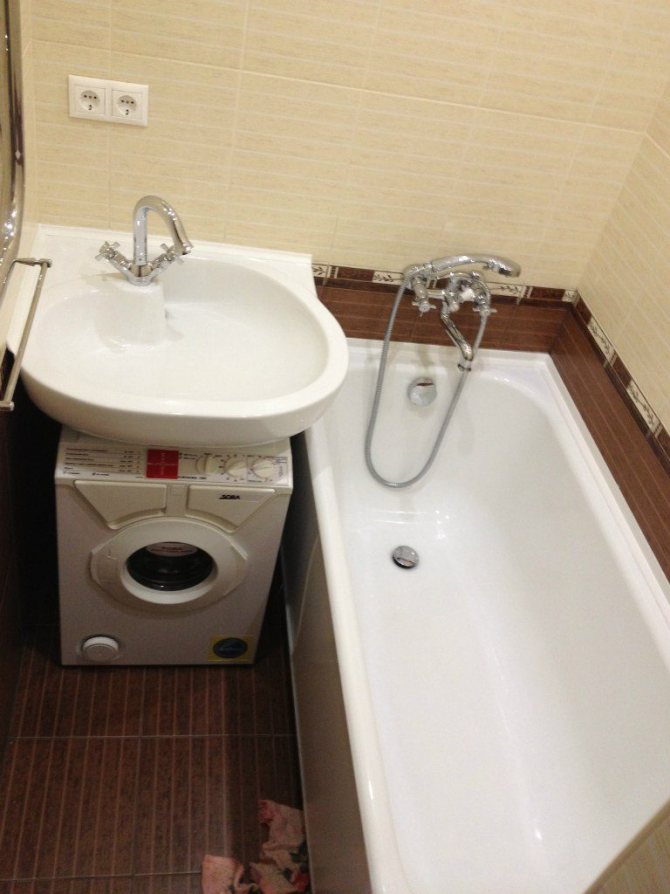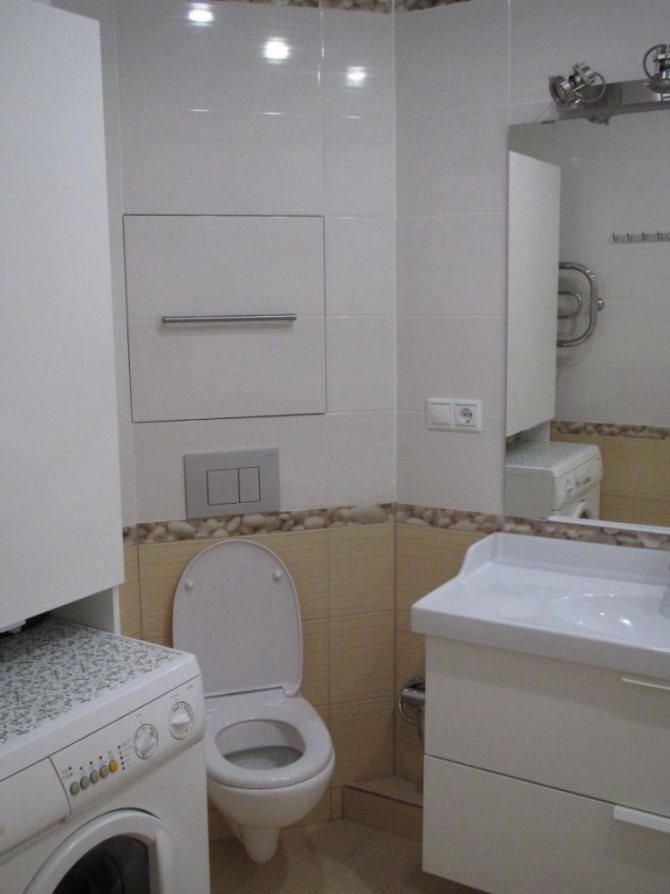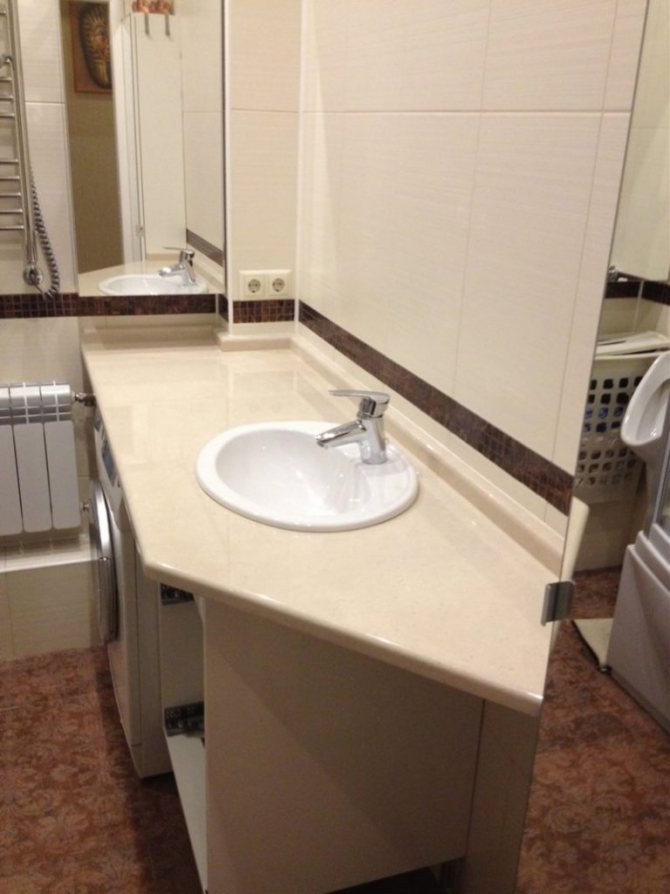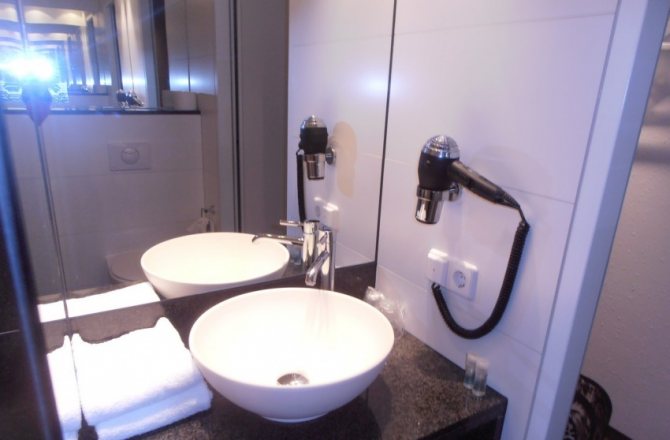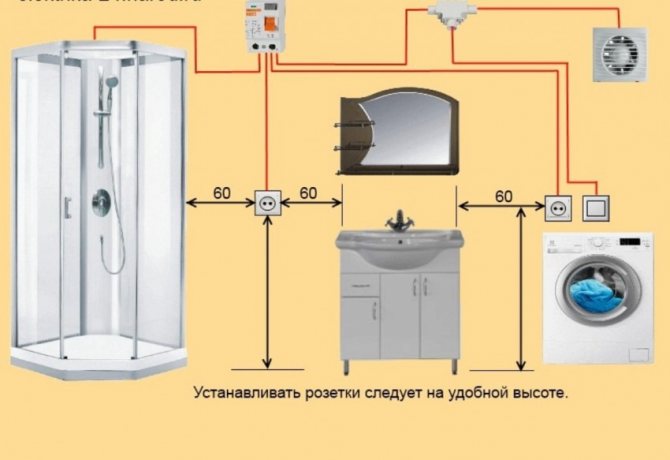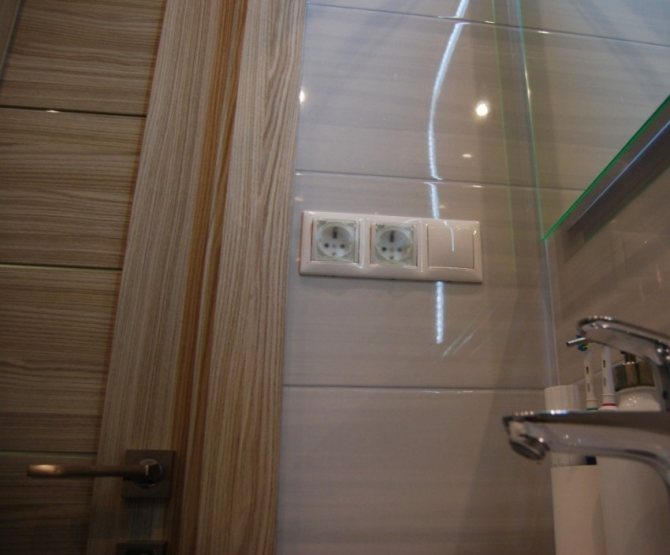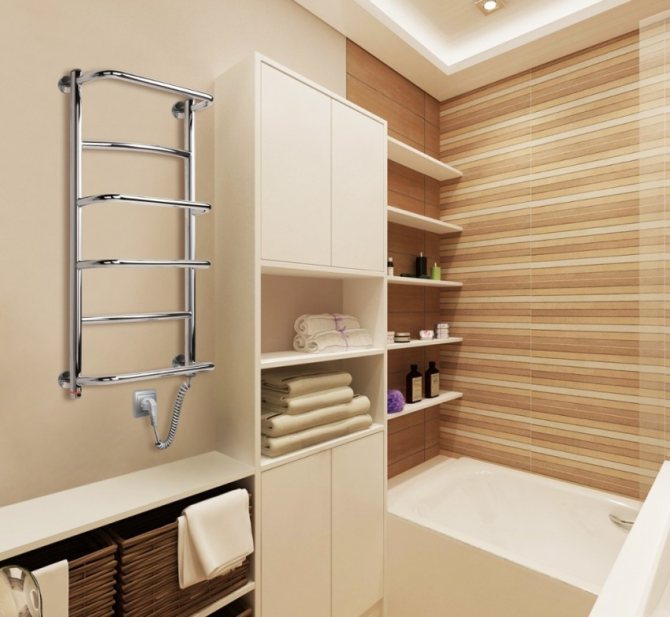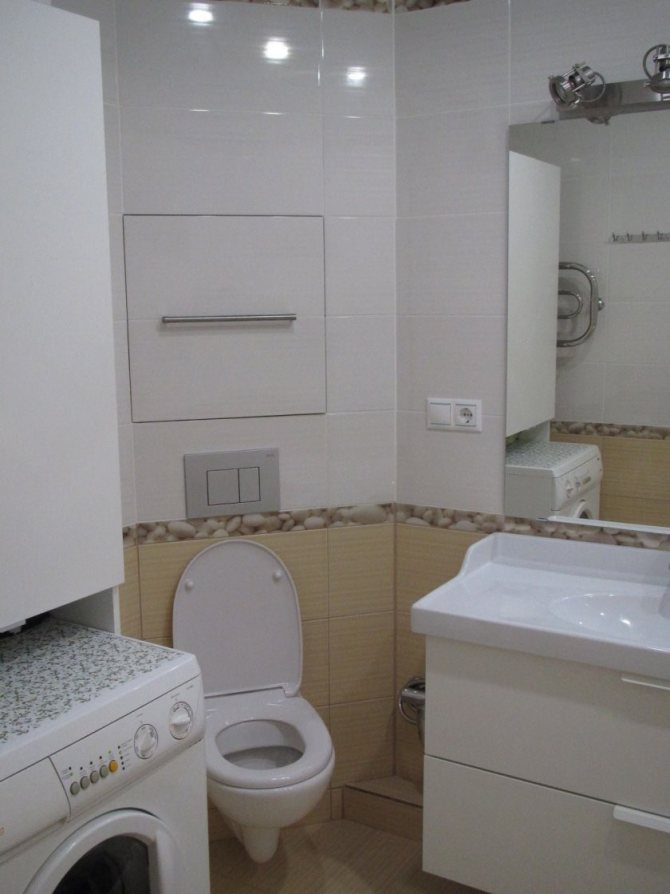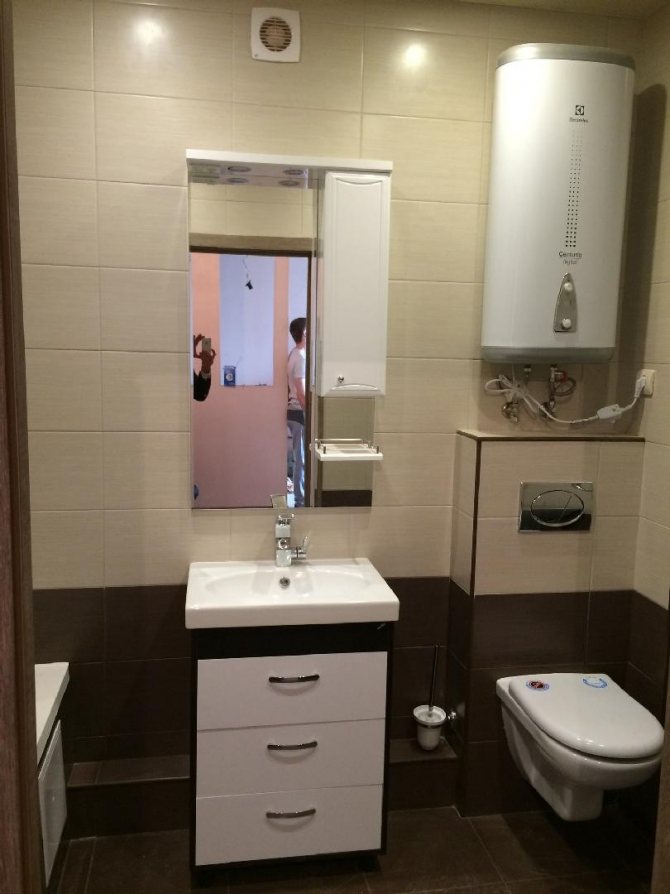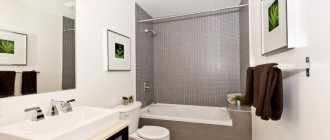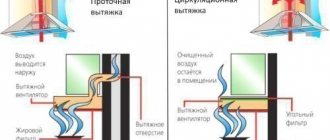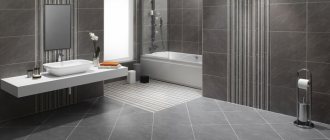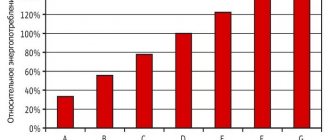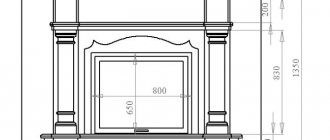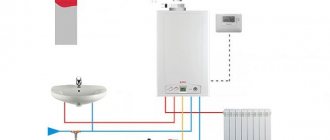Is it possible to install a socket in the bathroom
In buildings built in Soviet times, it was almost not provided for the installation of sockets in the bathrooms. The main reason was weak wiring, small area of premises, lack of electrical appliances that require connection. All available means of switching - sockets and switches - were installed outside, not far from the door.
Such a connection scheme created certain inconveniences, since all electrical appliances had to be connected from the outside, and the door to the bathroom did not close at the same time. Many owners were forced to use extension cords, which is strictly prohibited by the requirements and provisions of the PUE.
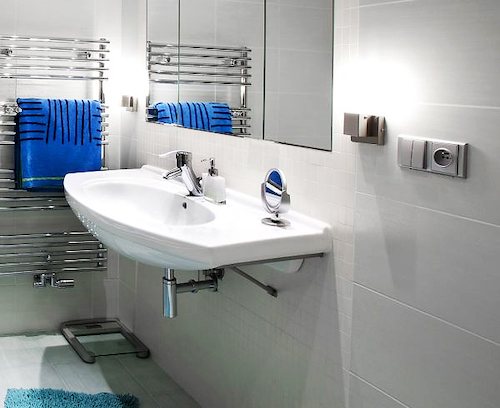
Modern apartments are distinguished by large areas for furniture, a bathroom, especially where the bathroom is combined with a toilet. An additional internal space has appeared, where, in addition to small household appliances, it is possible to place powerful equipment - washing machines, a boiler, heated towel rails and other types of electrical installations. Many rooms are equipped with underfloor heating systems that require a separate connection.
Before installing sockets in the bathroom, you should determine their exact number, in accordance with the planned connection of consumers. Among them, a division should be made into equipment that is permanently connected to the network and devices that are used only occasionally. Devices that are permanently connected to the network can be connected not to the outlet, but through the terminal block directly to the home electrical panel.
Selection of cable cross-section for its installation
Regulatory documentation prescribes to lay the cable in the bathroom in a closed way. For supplying the cable in the walls, groove channels are made. When the wiring is laid in the channels, plaster, facing material is applied on top.
Laying the cable over the wall is an open installation. This option will require less effort and time. In this case, the cable must be protected by a corrugation or cable channel.
Whichever way of laying is not chosen, passage in the "0" zone is not allowed.
In the data sheet for each household appliance, its power is indicated. Depending on this, the cable cross-section is selected. How much equipment is fed at the same time is counted. The cable cross-section is selected based on the expected load on it (table).


For example, to power the washing machine, a copper cable with a cross section of at least 2.5 mm is selected. If this wire feeds a couple more household appliances (boiler, “warm floor” system), then without the cross-section increased by 2 times, the wiring will not cope with the load. Otherwise, the cable will heat up and the insulation will melt.
Division of the room into separate zones
When choosing an installation site, it is necessary to follow the rules and be guided by the PUE, while all distances, including the installation height of the sockets, must be observed. It is recommended to arrange the sockets so that in the event of a breakdown, they are easily accessible for replacement or repair. In order to avoid violations of the installation rules, the entire bathroom is conditionally divided into several zones.
According to regulatory documents, the entire territory of the bathroom is conditionally divided into several zones. They determine the degree of safety and allow you to most optimally develop a plan for the placement of electrical appliances and equipment, to lay the wiring to each point in the shortest possible way.
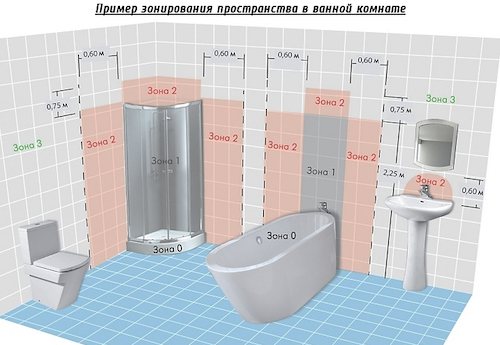

The conditional division of the bathroom includes the following zones:
- Zone 0. Grips the inside of the shower tray and the inside of the bath. It is impossible to place any waterproof electrical equipment in this place.
- Zone 1. Located directly above the shower tray, bathtub, washbasin or sink, at a height of 2.5 m from the floor.
- Zone 2. Located up to 60 cm in all directions horizontally from cabinets, shower tray, bathtub or sink. The height from the floor is up to 2.25 m. It covers the area above the 1st zone at a height of 3 m from the floor.
- Zone 3. Overlaps the 2nd zone by 2.4 m, keeping the height from the floor 2.25 m. The height above the 2nd zone is up to 3 m. Based on these parameters, the height of the sockets in the bathroom is also determined.
Connection diagram and installation
As mentioned, electrical equipment in this room is connected through an RCD. Ideally, it will be good if all sockets and appliances are connected through a separate machine, but this is not always possible to do without capital investments and without gating. The connection diagram is shown below.
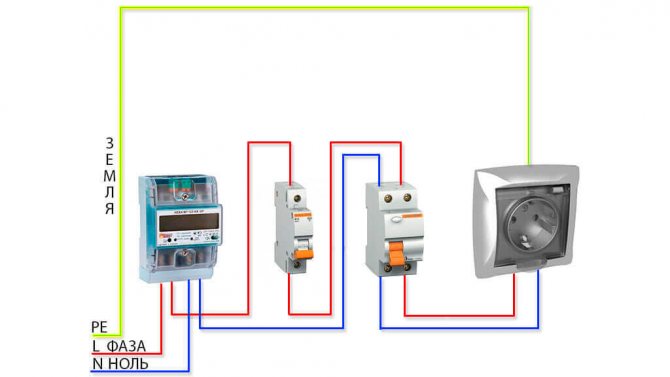

Depending on how you can arrange the outlets, either before or after the tiles, you will need to upgrade the electrical system of the bathroom. You can use overhead or built-in wiring products. In the above quotes, the PUE does not indicate whether there is a difference in their installation. Therefore, it is permissible to lay external wiring in the bathroom as well as in all others, for example, in cable ducts.
Be sure to install built-in models into the wall socket. There are no special differences in installation, except that you need to make a hole in the tile with extreme caution so as not to chop it off.
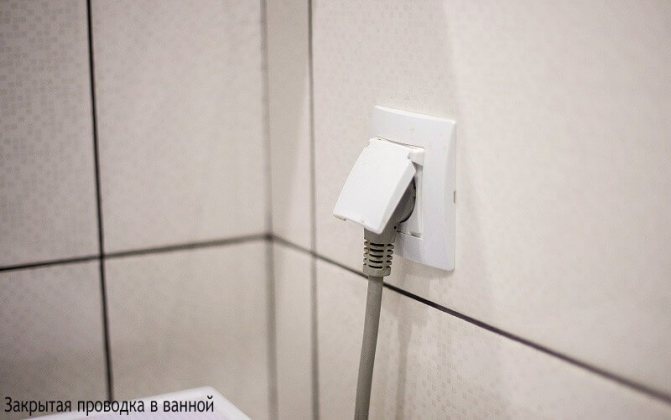

To do this, if there is no diamond crown, using special feather drills for the tile, make a series of holes in a circle, after which a round piece of tile is chipped off and a hole is hollowed out in the main material of the wall.
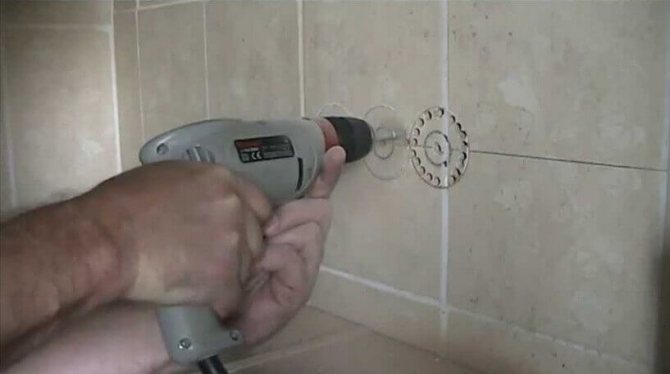

The video below clearly shows how to install an outlet in the bathroom:
To reduce the risk of electric shock, all live parts (metal) must be connected in a single circuit for equipotential bonding and grounded.
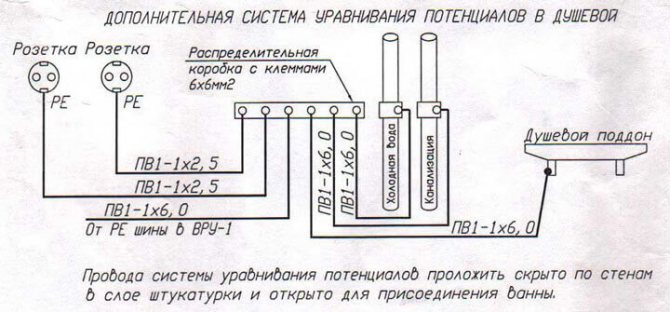

Where is it allowed to install the sockets
After the bathroom is conditionally divided into several zones, you can calculate how many sockets there should be and choose a place for placing sockets for electrical equipment. At the same time, the norms and rules established for each site should be observed.
The zero zone, as already noted, is not intended for the installation of any devices. The only exceptions are devices used directly in the bath. They operate on a voltage of no higher than 12 V, and the supplying step-down transformers are placed outside the boundaries of this section.
In the first zone, you can install a shower and an instant heating water heater. Also, it is allowed to install an individual electric shower equipped with a pump with high-quality waterproofing. There are also wires connecting these devices.


In zone 2, the location of all devices permitted in zone 1 is allowed. On the same site, lighting and water heaters with a protection class of at least 2, equipped with basic and additional insulation, are installed. It is prohibited to install junction boxes and controls in all of the zones listed, from 0 to 2.
The third zone is considered the most remote from dangerous places. Firstly, they must be connected via an RCD with a trip current of up to 30 mA. In the case of using a group line, the pickup current is set to 10 mA. The second condition or option is to connect the sockets using an isolation transformer, but in practice this method is very rarely used.The distance from the outlet to the pipeline must be at least 50 cm, and from the doors of the shower stall - 60 cm or more.
Choice of sockets for the bathroom
Choosing the right waterproof outlets for your bathroom is a snap. Despite the large number of design solutions, from a technical point of view, these products cannot be classified as diverse. When classifying them, only two main features are used - the power and the number of consumers connected at the same time.


The quantitative indicator, as a rule, does not raise any special questions. When choosing outlets, the main focus is on the power indicator. For example, washing machines and other powerful equipment are connected to sockets with a rating of 16 A. Appliances with lower parameters may melt due to overload and cause a short circuit. Low-power sockets, including those with a cover, are used to connect hair dryers, electric shavers and other similar devices, for which a rating of 8 A is quite enough.
The main difference between products intended for bathrooms is their protection from moisture and the presence of a spring-loaded cover that protects against direct ingress of water. All distinguishing features are indicated in the markings on the case, including the two-digit IP symbols.
The digital designation characterizes the ability to counteract various types of external intrusions. The first number corresponds to the dust protection class, and the second to moisture. The degree of moisture resistance is indicated by numbers from 0 to 8. The lowest class is considered to be class zero, and the highest is class 8, at which the product can be operated being completely immersed in water to a depth of more than 1 m. In bathrooms, it is recommended to use sockets with protection class 4 and above, providing protection against dripping and splashing in all directions.


Installation of sockets with a lower degree of protection is also allowed. However, such products cannot be mounted open. They must be installed in a special protective casing with the required tightness. In addition, any outlet intended for the bathroom must be equipped with a grounding contact.
Compliance with safety standards
In cases of manifestation of a life-threatening situation, the automatic device should operate: the current supply is interrupted. Dangerous situations include:
- leak onto the body of the device;
- short-term circuit;
- simultaneous interaction with conductive objects.
The machine is selected according to the main indicator - the digital designation of the leakage current. The indicator is imprinted on the machine body (in μA). The maximum permissible threshold of the machine's emergency operation should not exceed 30 μA.
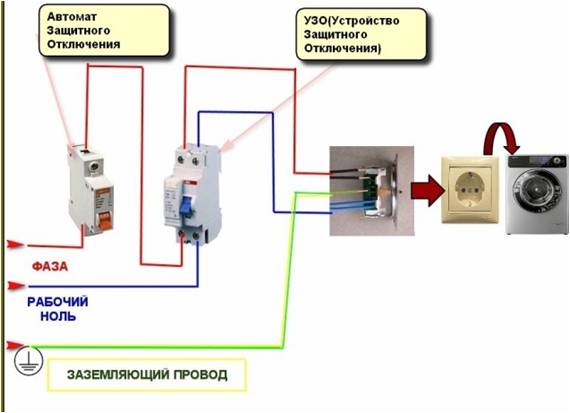

Automatic machines are also installed at 10 μA. But at the same time it is necessary to comply with the requirements for the insulation resistance of the parts carrying the current. Such sensitive machines are installed on new lines so that they do not stop work on the old line due to reactions to a false signal.
The socket with a household appliance is connected to the machine outside the bathroom. It is installed on the main panel of the house.
A security system is incomplete without a grounding cable. It equalizes potentials to the full safe line. Old methods of equipping grounding through a metal pipeline or building fittings are strictly not acceptable.
The wiring along the lines comes from the back box. One box is installed per socket strip. The place for the boxes is chosen closer to the ceiling. From this point vertically, going down, wires are laid to the sockets.
Line installation in the bathroom
Wet walls and floors in rooms with high humidity create an environment that conducts electricity well. Therefore, the laying of wires in the bathroom should be done according to certain rules:
- The wires are laid in a hidden way, under the finish in a corrugated pipe.
- Indoors, the installation of junction boxes, various twists and connections is prohibited. The wires are laid in one piece and pulled from the outside of the box.
- Determining how many sockets are needed - most often, no more than 2-3 pieces.
- There must be a separate socket in the bathroom for the washing machine and water heater. Installation of the switch is carried out outside the room.
- Each group of devices or dedicated line is equipped with a circuit breaker.
- The wiring lines should be drawn strictly vertically and horizontally, at what height is required in specific places. The wires themselves must be with copper conductors with a cross section of at least 2.5 mm2, enclosed in triple insulation. Used wires with a large number of bends or with damaged insulation are not allowed for use.
It is recommended to replace the old wiring, installed a very long time ago and never changed. This will allow during operation to avoid such malfunctions as overheating, short circuits, sparking, fire, accompanied by constant tripping of the circuit breaker. Often you have to solve the problem of how to move the outlet.


After marking the lines, wires and cables are laid in their places. The gasket can be made in the voids between the wall and the decorative covering using corrugated sleeves. In the second version, the wires are laid directly in the walls, for which strobes are made in advance according to the marking. After laying, the wires are fixed with staples, and then the strobes are covered with a solution of stucco.
Further, in the places where the sockets are installed, socket boxes are mounted, fixed with alabaster. They lead wires with three cores, of which two are phase and zero, and one is ground.
Ensuring safe operation
One of the elements of electrical safety is a protective grounding device - RCD. Previously, when two-wire wiring was used, a separate large cable was led from the bathroom to the switchboard and connected to the ground bus. Thus, the question of how to make grounding was solved. In modern wires, three cores are initially provided, one of which performs the function of grounding. It must be connected to the grounding pin of the waterproof outlet, and then also goes to the distribution board.
Additional electrical safety is provided by a residual current device. These devices are mandatory for use in electrical wiring lines to bathrooms. The RCD is located in the home electrical panel and cuts off the power in case of current leaks.
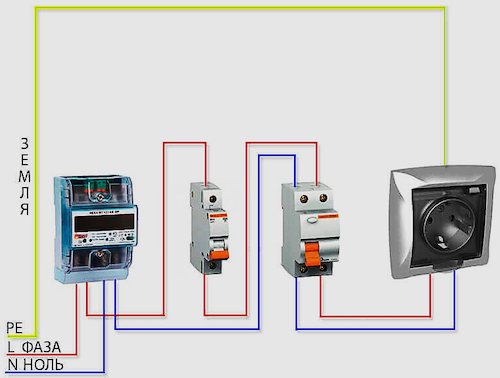

A separate RCD with a rating exceeding the rated current of the circuit breaker is installed on the sockets in the bathroom. If this condition is not met, then the circuit with the protective device will simply not function normally.
Simultaneously with the RCD, automatic switches are installed to protect the line from overloads and short circuits. They protect individual power outlets or groups of outlets. The rating of the protective equipment is selected in accordance with the expected load.
How to position the sockets
Given the above described zone characteristics, it becomes clear that the location of the outlets depends on the specific zone and security. In this regard, it is possible to identify certain requirements for each zone, which will help determine the location and number of outlets in the bathroom.
| 0 | 1 | 2 | 3 |
| The rules of this zone prohibit the installation of appliances that will not be used in the bathroom itself. In addition, the maximum voltage level of those should be 12 V.The location of power supplies is allowed in transformers located outside the space of this zone. | It is permissible to place only water heaters in the space of this zone. | This zone allows you to install not only water heaters, but also light sources that belong to the second class of protection. (There is a 4th class of protection) The lighting fixtures of the second class are characterized by double insulation, which increases their level of safety. | The space of this zone is intended for equipment in its sockets, which have special requirements, as well as the wiring system for the bathroom. |
In addition to these requirements, there are some more points that should be taken into account when equipping a bathroom with electricity:
- In all zones, except for the 3rd zone, it is forbidden to place and connect boxes for the distribution of electricity or control units.
- GOST allows you to equip a bathroom with a floor heating system in any of the zones, but on the condition that the installation is carried out using a special metal mesh connected to the EMS.
- It is not allowed to lay electrical wiring that is located in sleeves or corrugations made of metal.
- Zones 0, 1 and 2 may be partially wired if they supply electricity to equipment that is correctly zoned.
- A mandatory requirement for the installation of outlets and electrical appliances in the bathroom is the presence of grounding. There must be a control system to which the wiring located in any of the zones is connected.
Based on the specific requirements for wiring and installing sockets in the bathroom, it can be argued that the location of the sockets is allowed only in zone 3.
In addition, there is a need to use a so-called transformer for separating electricity. Basically, RCDs are used for such purposes.
In addition to the need to correctly determine the possibility of placing sockets in the bathroom, it is necessary to pay attention to the degree of protection, which is shortly designated ip. Not every socket can be installed in the bathroom. According to the regulations, such parameters must be in accordance with those indicated in the table.
| Zone number | 0 | 1 | 2 | 3 |
| Degree of protection | IPX7 | IPX5 | IPX4 | IPX1 and IPX5 if installed in public areas. |
The designation of the degrees of protection is deciphered as follows:
- the first number (where "X" is indicated) - shows how much protection against dust particles is present. In the case of a bathroom, such a parameter is unimportant, therefore it is not indicated.
- the second number is the level of protection against dripping moisture.
Additional safety measures in bathrooms
Additional electrical safety in the bathroom is provided by creating an equipotential bonding system in the bath.


In this case, the electrical connection of the conductive parts is performed, consisting of:
- Main protective conductor (trunk).
- Main ground wire (trunk) or special grounding clamp.
- Utilities consisting of steel pipes inside and outside the building.
- Metal elements of building structures, lightning protection systems and other suitable networks.
In accordance with the Rules for the Installation of Electrical Installations, all stationary equipment and other conductive parts are connected to the potential equalization system, as well as zero protective conductors with which open contact and touching open places are possible. The same list also includes a wall outlet for the bathroom.
This system must be installed in rooms with high humidity, even in the absence of any electrical equipment.All components are connected to a common wire, which in turn is connected to the PE bus, which is located at the input or in the switchboard.
Useful video
Choose trusted craftsmen without intermediaries and save up to 40%!
- Fill out the application
- Get offers with prices from the masters
- Select performers by price and reviews
Submit your assignment and find out prices
Connecting electrical appliances in the bathroom is a process that requires maximum attention, certain knowledge and skills. Too much humidity, splashing water - all this complicates the conditions in the bathroom. In such a room, direct contact of devices with water is in no case allowed. The outlet in the bathroom must be installed following a specific procedure and instructions. And, as a rule, there should not be many outlets. A couple of pieces will be enough, since basically one of them is used for a washing machine, and the second can be used for small household appliances.
